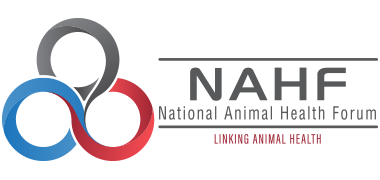
Increased risk of Rift Valley fever (RVF) in the Southern African region
Rift Valley fever (RVF) is a viral zoonotic disease that is transmitted by mosquitoes and can cause severe symptoms in animals and humans. The disease can result in death and abortion in RVF-infected livestock. An epizootic disease in animals, with spillover to the human population, tends to develop extremely rapidly following abnormally high seasonal rainfall at the local, national or regional scale.
FAO maintains a RVF Early Warning Decision Support Tool (RVF DST) based on precipitation and vegetation anomalies, among other environmental factors. According to the RVF DST, southern Africa has experienced above-average rains during the past year and heavy rains and flooding in the recent weeks that may result in suitable environmental conditions for the emergence of RVF.
On 16 February 2022, the FAO Animal Health Service, based on the analysis of data available through the FAO web-based RVF DST, Global Early Warning System (GLEWS+), Global Animal Disease Information System (EMPRES-i) and expert knowledge, concluded that there is an increased risks of RVF in your region both in animals and humans for the period February-April 2022, either due to favourable environmental conditions and/or through animal movement and highlighted the urgent need to ensure adequate preparedness for potential disease outbreaks, through One Health coordination.
Based on the risk maps prepared by FAO for the period February-April 2022, large potential hotspots of RVF vector amplification are predicted in South Africa, Botswana, Eswatini, Lesotho, southern Zimbabwe, southern Mozambique, north-eastern Namibia, south-eastern and western Angola. Localized hotspots are also forecasted in Madagascar, Malawi and Zambia (Map 1).
Considering the recent tropical storms and the above-average precipitation forecasted in the region for April 2022, FAO advises the countries to increase awareness of stakeholders, improve preparedness at national, subnational and community levels to safeguard livestock, livelihoods and public health, especially for exposed and vulnerable communities (farmers, pastoralists), and improve coordination with public health and environment services for managing the risk of RVF outbreaks. In order to prevent and mitigate any occurrence of RVF in the region,
FAO ADVISES COUNTRIES AT RISK THAT
· A RVF contingency plan with standard operating procedures for outbreak control exists.
· Staff are equipped and trained to implement the plan in case of outbreak.
· Proper safety/protection measures are in place for first responders/staff.
· Staff at all levels (national and/or subnational) are aware of specific high-risk areas.
· Risk based/targeted surveillance is conducted in the high-risk areas.
· Additional actions should be taken to increase the awareness of stakeholders in at-risk areas.

Map. Forecasted risk of RVF vector amplification for February /March 2022
Source: UN, 2020 modified with the data from the web-based RVF DST, February 2022.
Disclaimer: The boundaries and names shown and the designations used on these map(s) do not imply the expression of any opinion whatsoever on the part of FAO concerning the legal status of any country, territory, city or area or of its authorities, or concerning the delimitation of its frontiers and boundaries. Dashed lines on maps represent approximate border lines for which there may not yet be full agreement.
IMPORTANT LINKS
· Rift Valley fever surveillance (FAO Manual 2018)
· Recognizing Rift Valley fever (FAO Manual 2003)
· Preparation of Rift Valley fever contingency plans (FAO Manual 2002)
· Decision-support tool for prevention and control of Rift Valley fever epizootics in the Greater Horn of Africa (ILRI and FAO. 2009) Version I. ILRI Manuals and Guides. no. 7. 28p. Nairobi (Kenya): ILRI.
· Real-time monitoring and forecasting of Rift Valley fever in Africa (FAO FCC Information Sheet 2019)
· Driving preparedness and anticipatory actions through innovation: A web-based Rift Valley fever Early Warning Decision Support Tool (September 2021)
· Anyamba, et al. 2009. Prediction of a Rift Valley fever outbreak. Proceedings of the National Academy of Sciences 106(3): 955-959
CONTACT INFORMATION
FAO remains available to provide any technical support required by veterinary services of the countries at risk of RVF emergence in Southern Africa.
In case of any inquiry on the subject, including the need for technical support or information on the at-risk areas, you may wish to contact FAO Berhanu Bedane – Animal Production Health officer (berhanu.bedane@fao.org)


